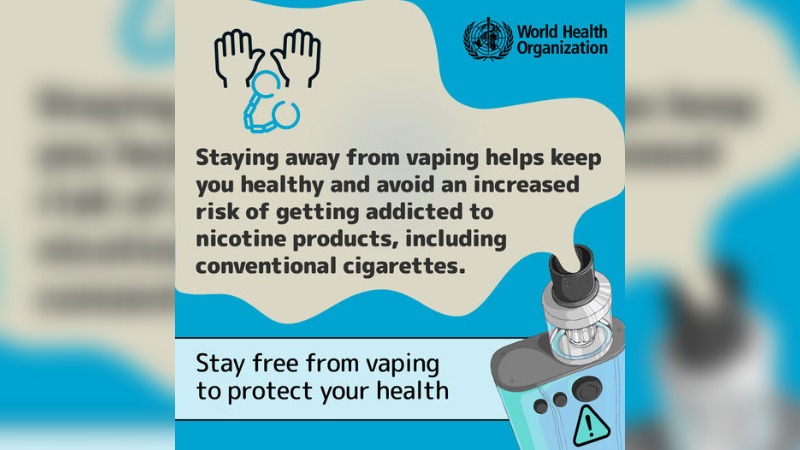Young people in Papua New Guinea have in the past years, gotten themselves into the trend of vaping without knowing the full extent of what the damages the device poses.
While scrolling on Facebook recently, I noticed the World Health Organization (WHO) page sharing posts that were advocating for people to stop the use of vapes in vaping.
So, I curiously clicked on the link and it led me to a Question and Answer page that I then started to read.
To vape means to inhale and exhale vapour containing nicotine and flavouring produced by a device designed for this purpose.
A Vape is categorized as an electronic nicotine delivery system (ENDS) that also includes electronic non-nicotine delivery systems (ENDS).
These systems heat a liquid to create aerosols that are inhaled by the user.
These e-liquids may or may not contain nicotine (not tobacco) but also typically contain additives, flavours and chemicals that can be toxic to people’s health.
ENDS contain varying amounts of nicotine and harmful emissions and can also expose non-smokers and bystanders to nicotine and other harmful chemicals.
Some products claiming to be nicotine-free (ENNDS) have been found to contain nicotine.
The consumption of nicotine in children and adolescents have detrimental impacts on brain development, leading to long-term consequences for brain development and potentially leading to learning and anxiety disorders.
Nicotine is highly addictive, and some evidence suggest that never-smoker minors who use ENDS can double their chance of starting to smoke tobacco cigarettes later in life.
Evidence reveals that these products are harmful to health and are not safe.
However, it is too early to provide a clear answer on the long-term impact of using them or being exposed to them.
Recent studies suggest that ENDS use can increase the risk of heart disease and lung disorders and nicotine exposure in pregnant women can have similar consequences for the brain development of the foetus.
Additionally, there is growing evidence that ENDS could be associated with lung injuries and in recent times e-cigarette and vaping have been linked to an outbreak of lung injury in the USA.
According to the WHO page, the levels of risk associated with using ENDS or tobacco products are likely to depend on a range of factors, some relating to the products used and some to the individual user.
Factors include product type and characteristics, how the products are used, frequency of use, how the products are manufactured, who is using the product, and whether product characteristics are manipulated post-sale.
Meanwhile both tobacco products and ENDS pose health risks, and the safest approach is not to use either while the World Health Organization regularly monitors and reviews the evidence on ENDS and health and offers guidance to governments.
Staying away from vaping helps keep you healthy and avoid an increased risk of getting addicted to nicotine products, including conventional cigarettes.
Stay free from vaping to protect your health.

